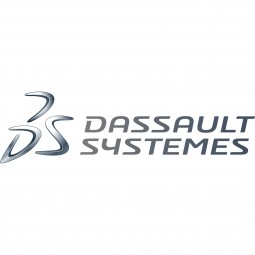
Technology Category
- Application Infrastructure & Middleware - Event-Driven Application
- Platform as a Service (PaaS) - Application Development Platforms
Applicable Industries
- Equipment & Machinery
- Telecommunications
Applicable Functions
- Product Research & Development
- Quality Assurance
Use Cases
- Inventory Management
- Supply Chain Visibility
Services
- System Integration
- Testing & Certification
The Customer
Fujitsu Network Communications
About The Customer
Fujitsu Network Communications is a US-based subsidiary of Fujitsu Limited of Japan. As the leading optical solutions provider to land-line, cable, and wireless carriers, Fujitsu helps to complete billions of connections daily. Its customer roster includes household names like Verizon and AT&T. Fujitsu prides itself on delivering the highest quality in the industry and is known for its reliable, long-lasting products. As customer demands for new product features and capabilities escalated, Fujitsu recognized the need for advanced processes and systems to maintain its quality-leader position.
The Challenge
Fujitsu Network Communications, a leading optical solutions provider, faced challenges in managing customer requirements for increasingly complex products, developing solutions, and testing them on accelerating schedules. The company's document-based system made it difficult to reuse requirements and communicate them to downstream groups, necessitating a shift from a document-centric approach to a data-centric one. Managing large numbers of documents was time-consuming and lacked visibility, making it hard to keep the requirements and test teams in sync. The company was also experiencing issues with testing requirements or writing test cases for requirements that had been modified or no longer existed. Fujitsu needed a solution to eliminate these inefficiencies and streamline its processes.
The Solution
Fujitsu turned to Dassault Systèmes (3DS) and its high-tech solutions on the 3DEXPERIENCE Platform, custom built for high-tech companies. Fujitsu chose ENOVIA Version 6 (V6), the 3DS application for collaborative innovation, to address requirements, traceability, and testing. The goal was to improve data visibility, eliminate rework, and streamline product development from initial customer requirement to manufacturing. ENOVIA V6 integrates Fujitsu’s requirements and test case management processes on a single platform, replacing multiple applications and managing over 200 different processes. The solution also serves as a repository for all test cases, providing advanced dynamic reporting capabilities while managing a wide range of processes. ENOVIA V6 helps Fujitsu manage requirements as metadata, facilitating comprehensive reporting, quicker user access to requirements, requirement reuse, and change management.
Operational Impact
Quantitative Benefit

Case Study missing?
Start adding your own!
Register with your work email and create a new case study profile for your business.
Related Case Studies.

Case Study
Smart Water Filtration Systems
Before working with Ayla Networks, Ozner was already using cloud connectivity to identify and solve water-filtration system malfunctions as well as to monitor filter cartridges for replacements.But, in June 2015, Ozner executives talked with Ayla about how the company might further improve its water systems with IoT technology. They liked what they heard from Ayla, but the executives needed to be sure that Ayla’s Agile IoT Platform provided the security and reliability Ozner required.

Case Study
IoT enabled Fleet Management with MindSphere
In view of growing competition, Gämmerler had a strong need to remain competitive via process optimization, reliability and gentle handling of printed products, even at highest press speeds. In addition, a digitalization initiative also included developing a key differentiation via data-driven services offers.

Case Study
Predictive Maintenance for Industrial Chillers
For global leaders in the industrial chiller manufacturing, reliability of the entire production process is of the utmost importance. Chillers are refrigeration systems that produce ice water to provide cooling for a process or industrial application. One of those leaders sought a way to respond to asset performance issues, even before they occur. The intelligence to guarantee maximum reliability of cooling devices is embedded (pre-alarming). A pre-alarming phase means that the cooling device still works, but symptoms may appear, telling manufacturers that a failure is likely to occur in the near future. Chillers who are not internet connected at that moment, provide little insight in this pre-alarming phase.

Case Study
Premium Appliance Producer Innovates with Internet of Everything
Sub-Zero faced the largest product launch in the company’s history:It wanted to launch 60 new products as scheduled while simultaneously opening a new “greenfield” production facility, yet still adhering to stringent quality requirements and manage issues from new supply-chain partners. A the same time, it wanted to increase staff productivity time and collaboration while reducing travel and costs.

Case Study
Integration of PLC with IoT for Bosch Rexroth
The application arises from the need to monitor and anticipate the problems of one or more machines managed by a PLC. These problems, often resulting from the accumulation over time of small discrepancies, require, when they occur, ex post technical operations maintenance.

Case Study
Robot Saves Money and Time for US Custom Molding Company
Injection Technology (Itech) is a custom molder for a variety of clients that require precision plastic parts for such products as electric meter covers, dental appliance cases and spools. With 95 employees operating 23 molding machines in a 30,000 square foot plant, Itech wanted to reduce man hours and increase efficiency.



